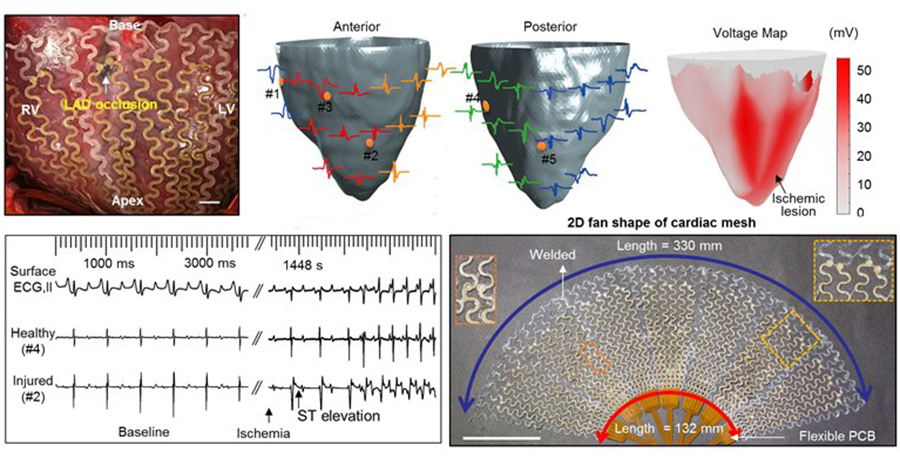Scientists at the Institute of Basic Science in South Korea have developed a highly stretchable wearable that can be implanted around the heart or worn on the skin to more accurately measure a wearer’s vitals.
Read more LifeSignals Gets FDA Clearance For Its Wireless LP1100 Life Signal Patch
Made from a flexible mesh material, the smart implant measures the heart’s electrophysiological signals. Electrophysiology is the study of the heart’s electrical activity and is used to diagnose abnormal heartbeats or arrhythmia.
Research is ongoing rapidly into materials for wearables and implantable medical devices. This latest research demonstrates a new material developed by Korean scientists, which can record electrical signals from tissue or skin it contacts, and deliver stimuli to the area, reports MedGadget.
Because of its stretchable property, the material is ideal for implantation in tricky areas, such as around the heart. This guarantees that it doesn’t hamper heart’s normal activities. The patch is made from gold-coated silver nanowires that are housed in a flexible rubber called polystyrene-butadiene-styrene (SBS). The gold coating prevents the silver from entering the body, where it could have toxic effects, and reduces the potential for corrosion caused by bodily fluids.
“We took advantage of silver’s high conductivity, SBS’ stretchability, and gold’s high biocompatibility,” said Hyeon Taeghwan, a researcher involved in the study appearing in Nature Nanotechnology. “Finding the right proportion of each material was the key to success.”
When implanted, the wearable provides information on muscle and cardiac dysfunctions, and can apply electrical and thermal stimulations. Researcher believe it could be employed in future therapeutic applications, such as pain relief, rehabilitation, and prosthetic motor control.
Upon testing the device on human skin for recording the electrical activity of heart and muscles, the researchers found that the softness, elasticity and stretchable property of the patch allowed it to follow the contours of flexible joints, such as those in the wrist.
The first test was therefore performed on the forearm, where it simultaneously monitored electromyography signals, and delivered electrical and thermal stimulations.
For their next test, the researchers took it to the next level and manufactured a customized large mesh and fitted it on the lower part of a swine heart.
While wrapped around the heart, the device was able to read signals from the entire heart to pinpoint possible lesions and help recovery. For example, the mesh was able to register the change of electrocardiogram signal caused by an acute heart attack. During repetitive heart movements, the wearable remained stable and apparently didn’t interfere with the heart’s pumping activity.
“Although various soft cardiac devices have been reported for the rat heart. This study on pigs can approximate human physiology more accurately,” said CHOI Suji, first co-author of the study.
“We aim to study heart diseases, and stimulate the heart more effectively by synchronizing cardiac pumping activity.”













